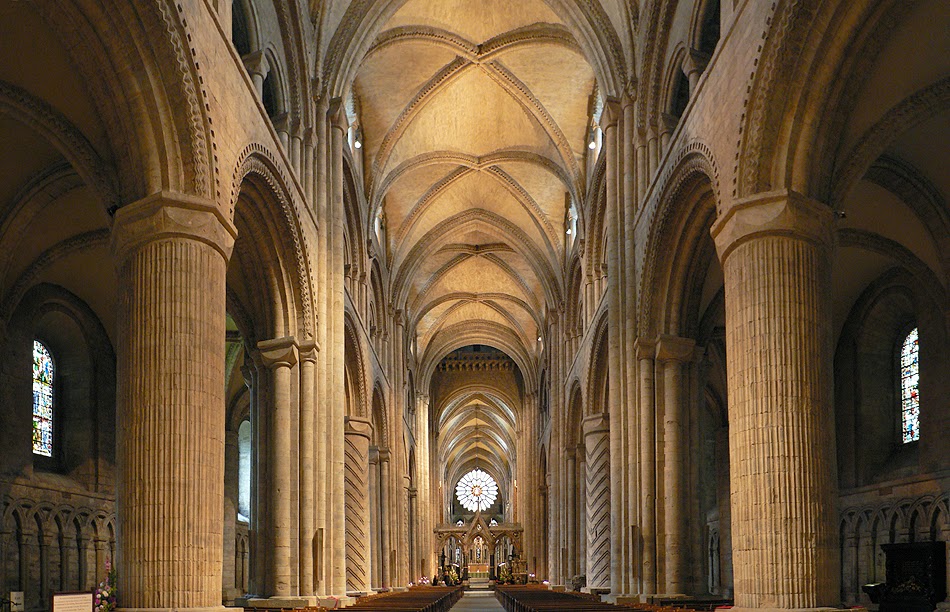 |
| Durham's massive patterned columns hold aloft the finest cathedral in northern Europe, built (between 1093 and 1128) to symbolise the power of the conquering Normans, and embodying revolutionary technology. Description from Paul Johnson, photo via Wikipedia. |
Absolutely gorgeous isn't it? A bit about cathedrals in general from Paul Johnson's Art: A New History.
The liturgical demands of the cathedral, which were complicated and exacting and continually becoming more so, meant that it had to be designed from the inside outwards. The dynamic force pushing the designer against the frontiers of his technology was the insistence of bishop and chapter, backed by the public, that he provide an ever-larger enclosed space in the middle of the church. This was reinforced by a religious and aesthetic urge to let in more light by building the walls higher and higher. To the early medieval man, the church was an epitome of his cosmology. The stone with which it was built symbolised eternity. The walls upheld the firmament above. There God dwelt to receive his voice and prayers ascending upwards. Worship was a rising motion and the higher the ceiling the closer man's prayer and song, which filled it with sound, would come to God. And the higher the roof, the more detached it was from the clayey prison of the earth beneath. Height was therefore an escape from earth to Heaven and that was why the cathedral had to provide it.He goes on to talk about why Durham is so revolutionary and the constraints the artist was working with in order to built a fitting tribute to God.
No comments:
Post a Comment